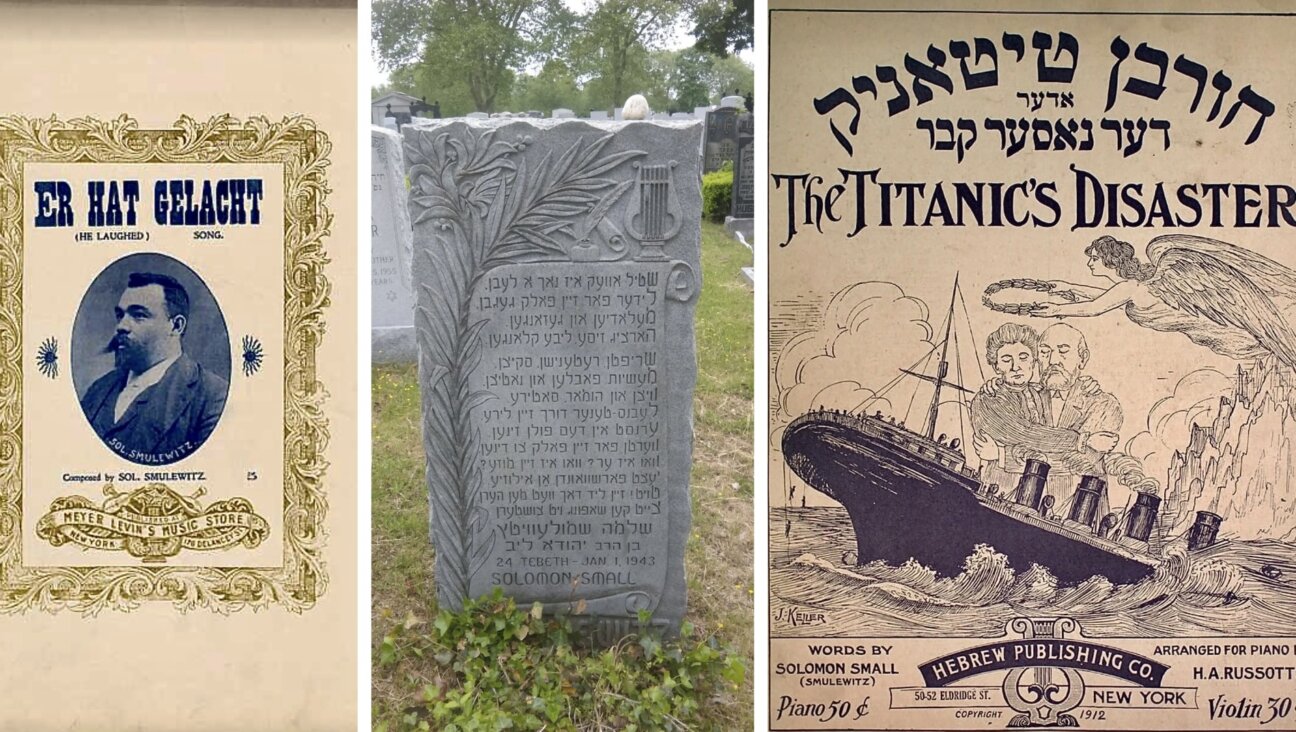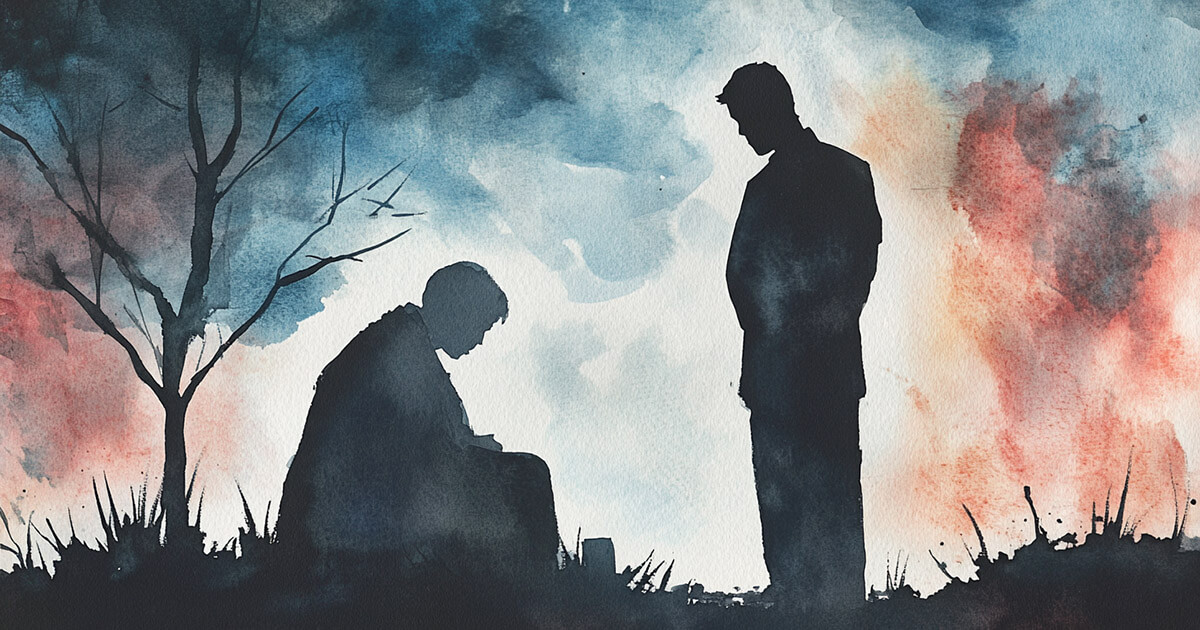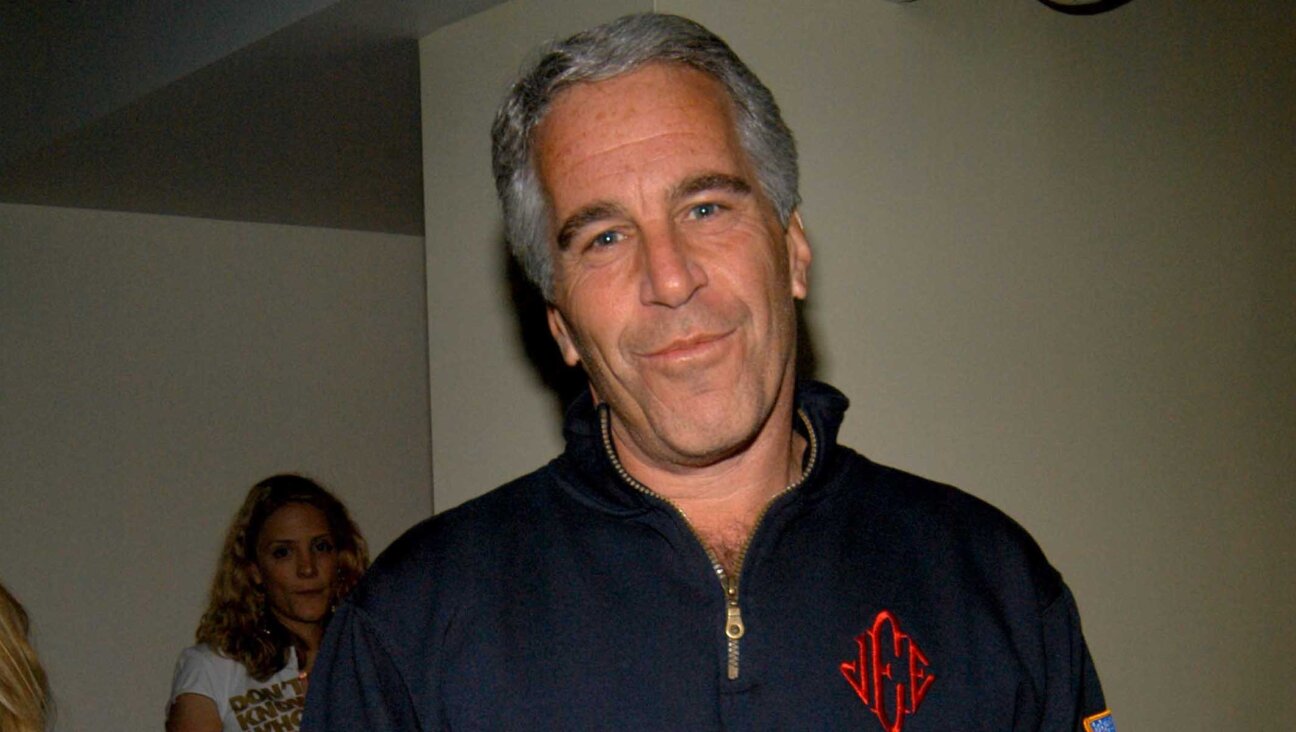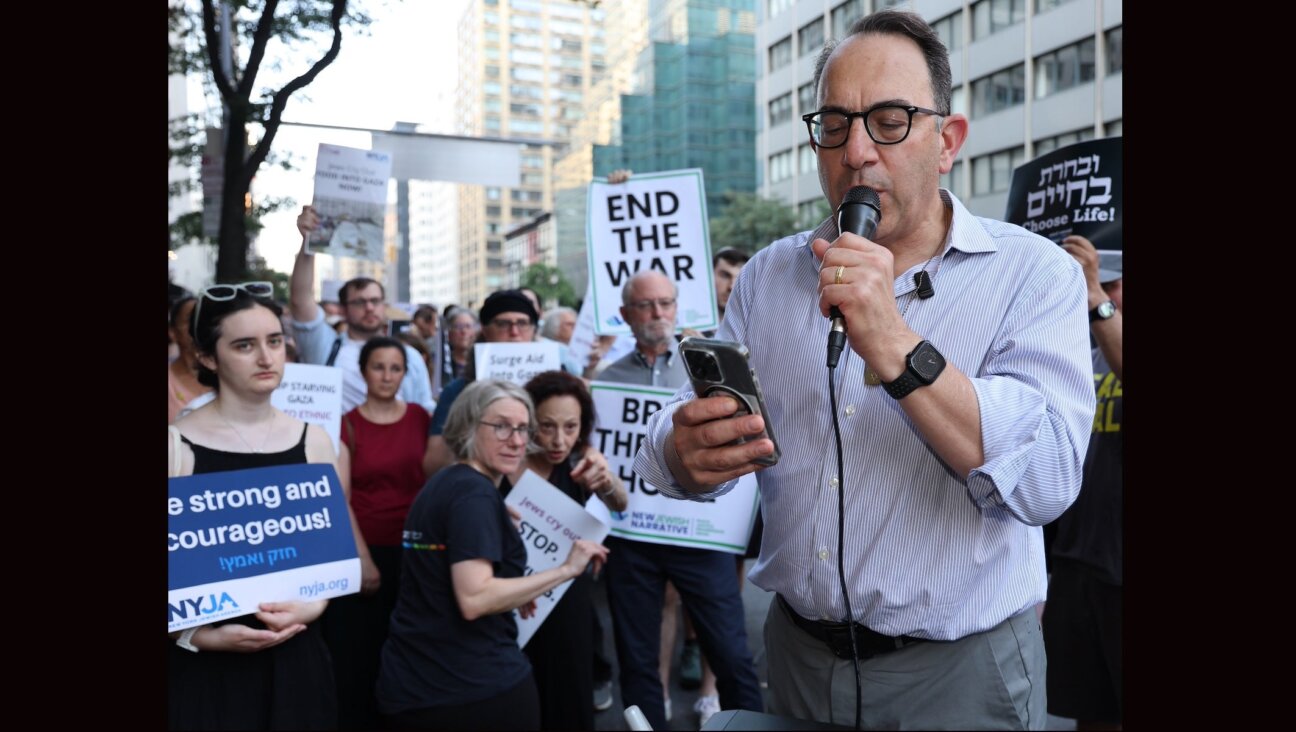Paintings, Judaica and history collide at Tobi Kahn’s Eldridge Street exhibition
The artist’s work has a homecoming at the historic synagogue
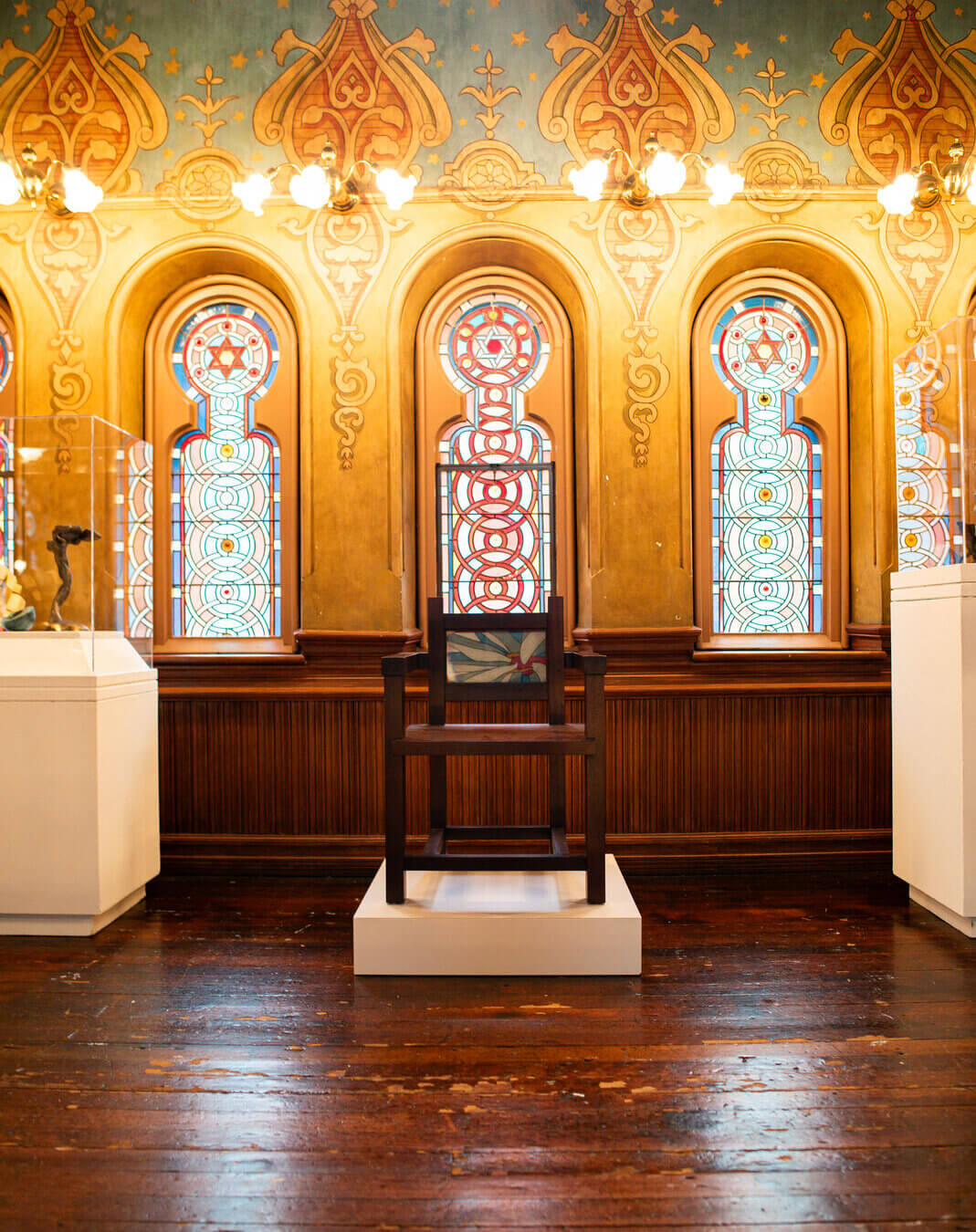
Tobi Kahn’s AMAH III (Baby Naming Chair) in the women’s balcony at Eldridge Street. Photo by Erin Flynn. Courtesy of the Museum at Eldridge Street
Tobi Kahn may be the only artist to have his work in a gallery flanked by mezuzahs of his own design.
At the Museum at Eldridge Street, the historic synagogue on the Lower East Side, Kahn has just hung his first solo show in his home town of New York City in over a decade. Called “Memory & Inheritance,” the exhibition feels of a piece with the synagogue’s Moorish revival architecture. A hamsa, with three ornamental holes, was inspired by the windows in the women’s gallery, where one of Kahn’s mahogany naming chairs now rests above wooden pews.
“I see this as a site-specific installation,” said Kahn. “It feels very honest to be here.”
The show, which Kahn was asked to do after designing a series of mezuzahs for the museum, spans 20 years. One of the first artworks, “ATSYZ,” was painted after an image of Kahn’s mother’s grave dotted with stones, which, to him recalled the story of the Golem of Prague offering protection.

Kahn’s paintings are abstract and taken from photographs of plants and flowers, whereas ceremonial objects — a tzedakah box, havdalah candlesticks, a menorah with tulip-like openings — have practical functions and their own sacred geometry.
A shabbat spice box, inspired by his son’s childhood obsession with rocket ships and acorns, resembles both. The yahrzeit memorial light, made to commemorate the Shoah, recalls either the twisted trunk of a torso or a tree.
While Kahn built Judaica for personal use for years, it is only in the past two decades that he began making the work for exhibition, with his omer counters displayed in museums throughout the world. Kahn’s paintings, many not overtly Jewish or intended for ritual, indicate a synthesis of the divine in nature, drawing from the “Jewish color,” tekhelet blue, or, in his sky and water paintings, reflecting God’s division of the upper and lower waters in Genesis.
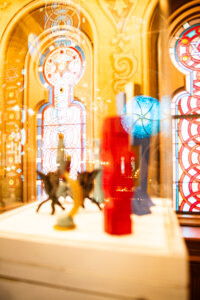
Walking through the gallery at Eldridge Street, which, for Kahn’s show, foregoes wall text for a downloadable audio guide, the show’s theme of memory and inheritance asserts itself.
Opposite one gallery wall is a permanent display about the building’s restoration. Kahn’s healing spaces, outdoor monuments that recall the letter “chet” or Stonehenge (“the holiest place” — though a pagan one). The naming chair for a baby is made to have the names of subsequent generations inscribed in the back.
A handful of objects are on display for the first time, including a holder for a shofar — which resembles his omer counters — and an asymmetric Star of David sculpture, reflecting the diversity of Jewishness and Kahn’s distaste for “sameness.”
Last Thursday the exhibition, which will run for six months, welcomed 150 guests to its opening. Kahn walked visitors through the genesis of the pieces, which serve to commemorate life and loss or offer a non-literal midrash.
On June 30, surrounded by his art at Eldridge Street he will receive a chaver, a title for service to the Jewish community, awarded by three rabbis. He will be the fourth generation in his family to receive the honor.
“I’m doing it the traditional way,” Kahn said, meaning it will be conducted by male Orthodox rabbis. “But then I’m opening it up to all people that have worked with me as an artist,” having statements from other faith leaders and artists as part of the ceremony.
Kahn has always wanted to have his work at a historic synagogue, and hopes to one day bring it to one in Europe, where his parents, Holocaust survivors, were born. But he chose Eldridge Street to host his work and chaver because its mission now reaches beyond a place of traditional prayer.
“That it’s not used as a typical synagogue anymore, I love,” Kahn said of Eldridge Street. “It becomes part of history.”
Kahn’s exhibit Memory & Inheritance is on view at the Museum at Eldridge Street until Nov. 10. More information can be found here.



